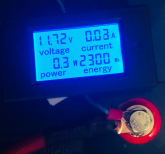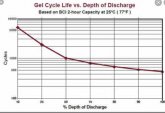Donald Siegel
New Member
- Joined
- Sep 24, 2019
- Messages
- 78
I bought two of these 6-months ago and noted that they are $100 off or $350 for a 200amp battery right now on Amazon with free shipping for Prime. I tested mine with a shunt and at 75% discharge it hit 2300Wh, while I only discharge to 50% normally I was impressed that it can deliver the goods in an emergency. One caution, its a tank something like 130lbs.







